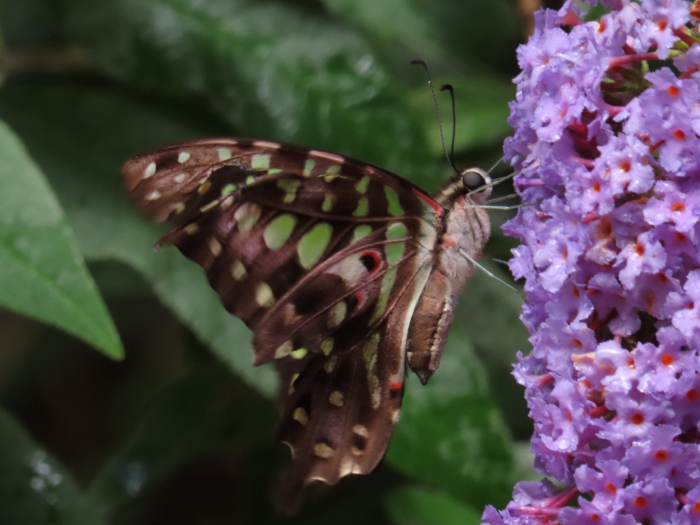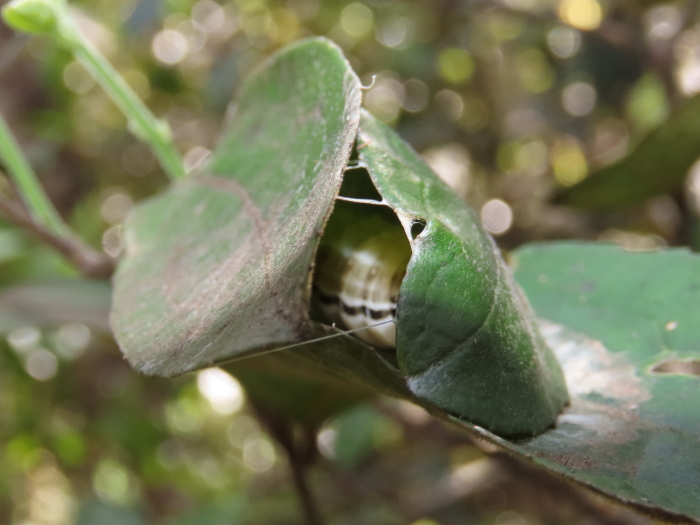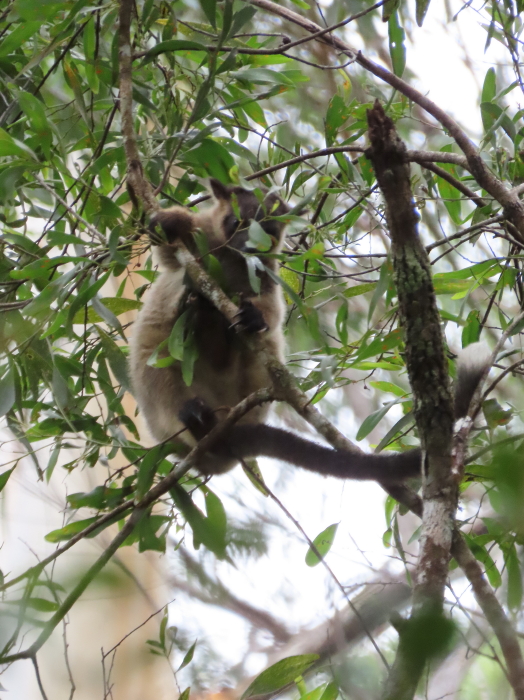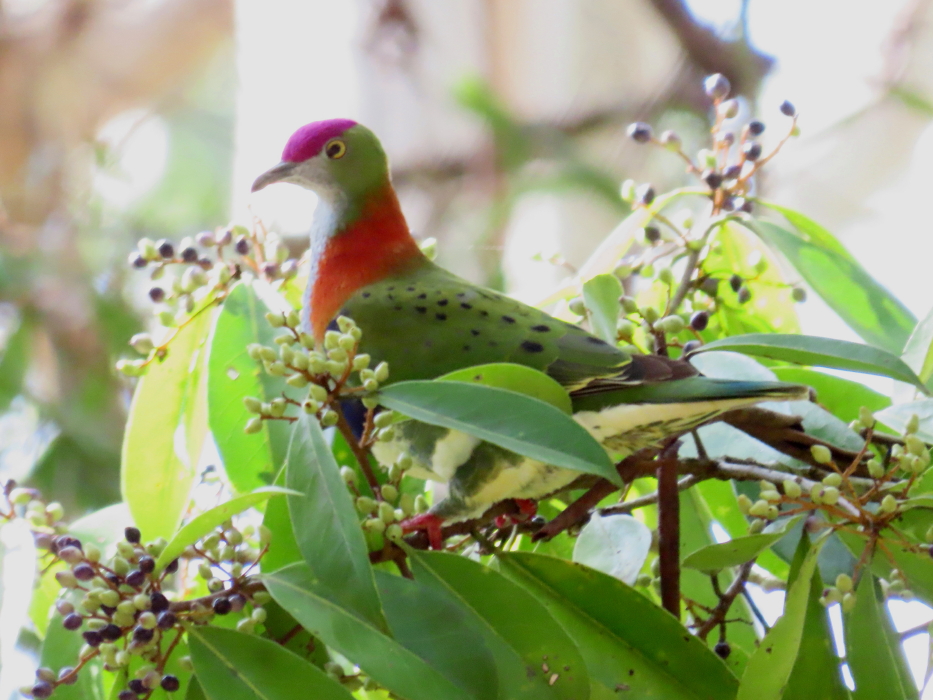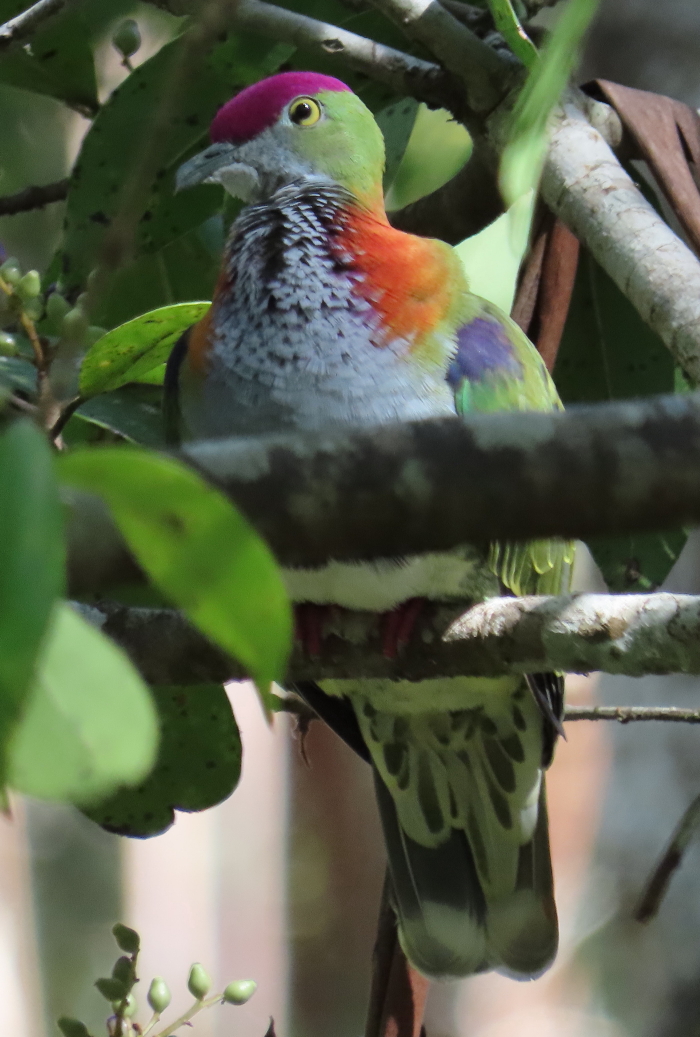
The Lilly-pillies along our creek (Syzygium smithii) are fruiting now, and they attract many birds. Not only were there flocks of King Parrots and Satin Bowerbirds feeding just metres from our house today, but in the same tree we also spotted a Tooth-billed Bowerbird, a juvenile Golden Bowerbird and 2 Spotted Catbirds. It doesn’t get much better than that!
Tooth-billed Bowerbird:
:
Spot the Spotted Catbird:


Having a siesta:
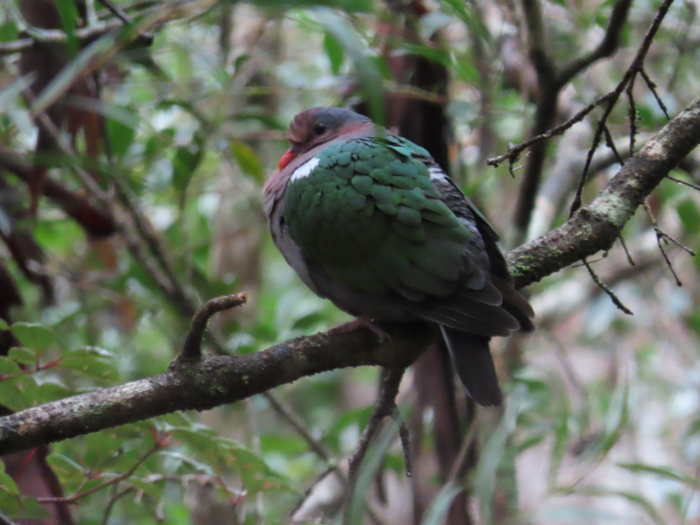
Likewise, in a sunny spot:
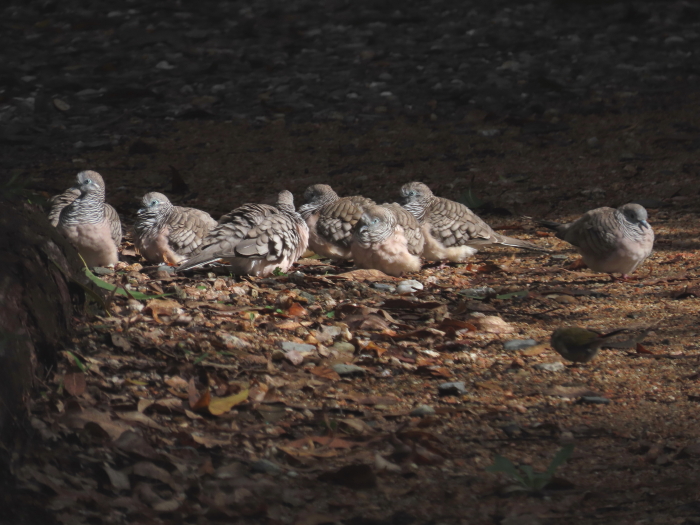
On the other side of the creek we could hear the dominant female cassowary walking around, calling occasionally. She has been around quite often recently, not so much interested in the Lilly-Pilly fruits (she prefers the fruits of Jungle Vine and native Ginger), but on the lookout for a mate.
Here she is following Dad and the chicks

but he isn’t interested, (yet) and actually chased her away (usually the male is wary of the larger female).
The chicks can benefit from his guidance for a bit longer…















